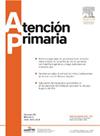对医院急诊科就诊次数和民众对初级保健的了解情况进行分析
IF 1.8
4区 医学
Q2 MEDICINE, GENERAL & INTERNAL
引用次数: 0
摘要
目的分析医院急诊科(ED)的非紧急和非紧急就诊情况及其特点,了解加泰罗尼亚居民对初级保健(PC)服务和急诊概念的认识。设计分为两部分:1)描述性、回顾性研究,其中调查了急诊科就诊情况;2)观察性、前瞻性和横断面研究,通过匿名和自愿的特别调查。分析的访问来自西班牙加泰罗尼亚一家三级转诊医院的急诊科。该调查以电子方式分发给加泰罗尼亚人口。参与者:1)2018年和2021年对急诊室的访问,按分类级别进行分类;2)加泰罗尼亚居民,不包括那些只有私人医疗保险的人和未成年人。主要测量方法:1)与急诊科就诊相关的分诊水平和变量;2)对急诊科所在区域的了解程度,以及他们必须决定是去急诊科还是去急诊科的4种情况。结果1)共分析了219,454次就诊,其中50%是不紧急或非紧急的;2)分析了270人。尽管熟悉PC区,67%的人表示,如果急诊室关闭,他们会去急诊室。在这些情景中,正确的回答从46.7%到86.3%不等。结论有必要在非紧急卫生状况下的人口管理和卫生资源的合理利用方面开辟未来的研究方向。本文章由计算机程序翻译,如有差异,请以英文原文为准。
Análisis de las visitas en la unidad de urgencias hospitalaria y de los conocimientos de la población sobre atención primaria
Objectives
To analyse less urgent and non-urgent visits to the hospital emergency department (ED) and their characteristics, and to determine the knowledge of the Catalan population about primary care (PC) services and the concepts of emergencies.
Design
It is divided into 2 parts: 1) descriptive, retrospective study in which ED visits were investigated, and 2) observational, prospective and cross-sectional study through an anonymous and voluntary ad hoc survey.
Location
The visits analysed were from an ED of a third-level referral hospital in Catalonia, Spain. The survey was distributed electronically to the Catalan population.
Participants
1) Visits to the ED made in 2018 and 2021 that were categorised at a triage level, and 2) residents in Catalonia excluding those who only had private health insurance and minors.
Main measurements
1) Triage level and variables associated with visits to the ED, and 2) knowledge about their PC area and 4 scenarios in which they had to determine whether they would go to the ED or PC.
Results
1) A total of 219,454 visits were analysed, and 50% were less urgent or non-urgent, and 2) 270 people were analysed. Despite being familiar with the PC area, 67% stated they would go to the ED if it were closed. In the scenarios, correct responses ranged from 46,7% to 86,3%.
Conclusions
The need to open future lines of research on the management of the population in non-urgent health situations and the appropriate use of health resources is demonstrated.
求助全文
通过发布文献求助,成功后即可免费获取论文全文。
去求助
来源期刊

Atencion Primaria
医学-医学:内科
CiteScore
2.90
自引率
8.00%
发文量
156
审稿时长
33 days
期刊介绍:
Atención Primaria es una revista que publica trabajos de investigación relativos al ámbito de la atención primaria de salud. Desde el punto de vista conceptual, Atención Primaria asume el nuevo modelo de atención primaria de salud, orientado no sólo a la curación de la enfermedad, sino también a su prevención y a la promoción de la salud, tanto en el plano individual como en el de la familia y la comunidad. En estos nuevos aspectos que definen el modelo de atención primaria de salud es en los que se centran los trabajos de investigación que publica Atención Primaria, la primera revista de originales española creada para recoger y difundir la producción científica realizada desde los centros de atención primaria de salud sobre cuestiones como protocolización de la asistencia, programas de prevención, seguimiento y control de pacientes crónicos, organización y gestión de la asistencia primaria, entre otros.
 求助内容:
求助内容: 应助结果提醒方式:
应助结果提醒方式:


